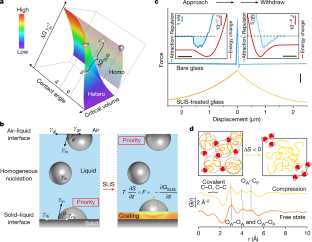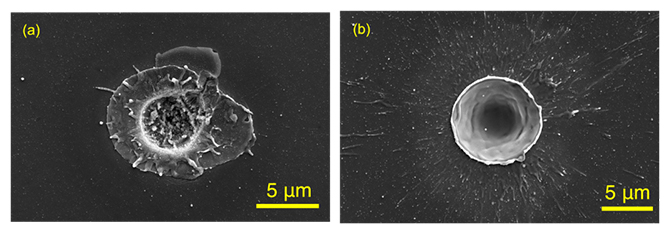2023-03-30 シンガポール国立大学(NUS)
この膜は、フィルタリングや分離に限定されるのではなく、エネルギー変換や触媒、センシングなど、幅広い応用分野において活用される可能性があります。この技術によって、エネルギー課題に取り組む新しい可能性が開かれることになります。
<関連情報>
- https://news.nus.edu.sg/energy-efficient-and-customisable-inorganic-membranes-for-a-cleaner-future/
- https://www.nature.com/articles/s41586-023-05809-y
気液界面における無機膜の機構論的定式化 Mechanistic formulation of inorganic membranes at the air–liquid interface
Chen Zhang,Wanheng Lu,Yingfeng Xu,Kaiyang Zeng & Ghim Wei Ho
Nature Published:29 March 2023
DOI:https://doi.org/10.1038/s41586-023-05809-y

Abstract
Freestanding functional inorganic membranes, beyond the limits of their organic and polymeric counterparts1, may unlock the potentials of advanced separation2, catalysis3, sensors4,5, memories6, optical filtering7 and ionic conductors8,9. However, the brittle nature of most inorganic materials, and the lack of surface unsaturated linkages10, mean that it is difficult to form continuous membranes through conventional top-down mouldings and/or bottom-up syntheses11. Up to now, only a few specific inorganic membranes have been fabricated from predeposited films by selective removal of sacrificial substrates4,5,6,8,9. Here we demonstrate a strategy to switch nucleation preferences in aqueous systems of inorganic precursors, resulting in the formation of various ultrathin inorganic membranes at the air–liquid interface. Mechanistic study shows that membrane growth depends on the kinematic evolution of floating building blocks, which helps to derive the phase diagram based on geometrical connectivity. This insight provides general synthetic guidance towards any unexplored membranes, as well as the principle of tuning membrane thickness and through-hole parameters. Beyond understanding a complex dynamic system, this study comprehensively expands the traditional notion of membranes in terms of composition, structure and functionality.



